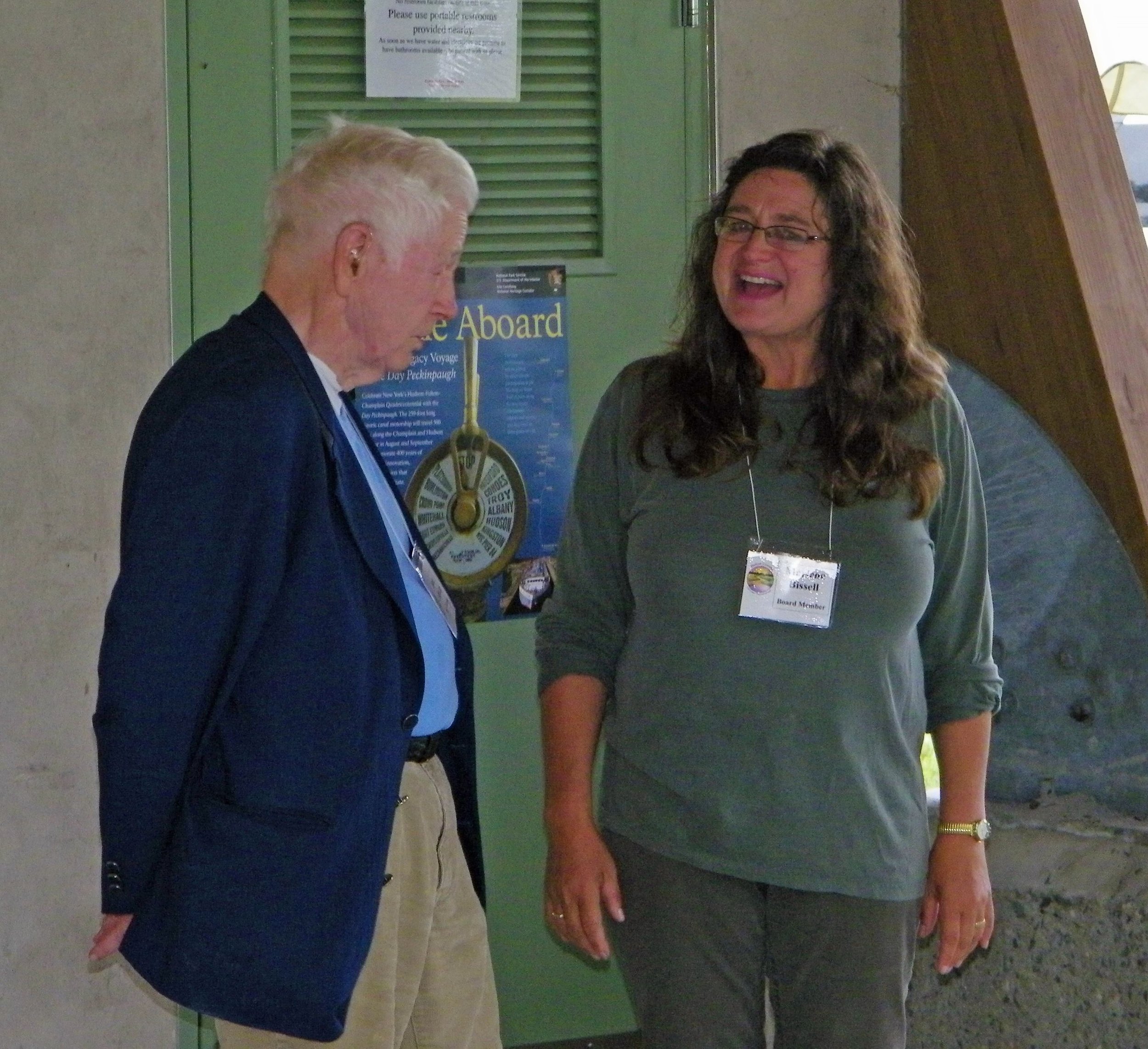Hudson Crossing Park's Story
In 1999, a "Scenic Byway" designation for N.Y.S. Route 4 between Waterford and Whitehall provided an opportunity for community projects with the potential to spark economic development. A renewed interest in local travel, a market that embraced historical, cultural, and educational tourism, and increased promotion of the N.Y.S. Canal System, set the stage for an innovative bi-county public park. In 2000, the Park was the number one recommendation in a Champlain Canal Corridor Management Plan.
A grassroots steering committee formed; volunteers, planners, school leaders, and elected officials from Saratoga and Washington Counties came together to work. Phil Lord, at that time Director of Museum Services for the N.Y.S. Museum, played an integral role in the start-up committee. Initial work began with a "Friends of Stark's Knob" group. Volunteers secured funding for signage, cleared trails, and hosted public events. Month after month committee members met to envision a park that could benefit local communities and serve a multi-generational audience. Slowly, an interweaving of history, geology, and environmental conscience began to emerge.
After receiving encouragement from the N.Y.S. Canal Corporation and local Town officials, "Hudson Crossing: A Bi-County Educational Park" (HCP) became a reality and the search for funding began in earnest.
New volunteers joined the committee. Folks joined Scenic Hudson's "RiverSweep" clean-up efforts and National Trails Day celebrations. Volunteers donated professional services - surveying, planning, graphic design, architectural concept drawings, and consulting were provided "pro-bono". Momentum grew as outreach efforts increased. In 2004, a public "charrette" attracted over 100 people. Overwhelming support for the project was evident and once again new volunteers stepped forward. Grants from both public and private channels provided the necessary monies for trails, signage and further planning efforts.
In 2005 the committee forged a strong working relationship with students and faculty members at Skidmore College. Student interns brought energy and insight; they organized workshops and the first "Hudson Fest" on Champlain Canal Lock 5 Island and helped with the Hudson Crossing Cardboard Boat Race at Fort Hardy Park. A Local Waterfront Revitalization Plan (L.W.R.P.) grant application, initiated and written by members of HCP, and submitted by the Town of Saratoga, was approved by the N.Y.S. Department of State. Hudson Crossing became a leader in this far-reaching inter-municipal planning effort.
In the spring of 2006, HCP incorporated as an educational corporation in the state of New York. Just a few months later, the Park received recognition from the I.R.S. as a 501(c)(3) not-for-profit entity. Grants allowed the Park's first paid staff person to come on-board in 2007 as project manager for the Hudson Crossing Play Garden and in 2012 to lead the Green Ribbon School Project.
Ongoing collaboration with local planners, landscape architects, and volunteers, led the Park to innovative and well-designed working documents. A "Multi-Modal" Trail Master Plan, a feasibility study and concept drawings for the proposed Environmental Education Center, and an Interpretive Plan now provide a "Mission-Driven" framework for moving the Park forward.
In 2012, with the Park thriving, the Board of Directors was restructured to provide a stronger base of leadership ensuring the long-term sustainability and fulfillment of the mission of Hudson Crossing Park.
The Park’s first full time employee and Executive Director was hired in 2017 and the organization’s capacity expanded, the Park’s reach began to grow as well. HCP was able to increase its programs, and facilities, reaching regional audiences with events such as the Albany Symphony Orchestra’s free community concerts (2021, 2022, 2025) which welcomed thousands of people to Schuylerville.
An agreement with the Historic Hudson Hoosic Rivers Partnership in 2022 gave Hudson Crossing Park the responsibility of managing the Gateway VIsitor Center (30 Ferry Street, Schuylerville), which also serves as the Park’s administrative offices. With the added responsibility and income of this agreement Hudson Crossing Park was able to hire 2 part time Directors in February of 2024, once again bringing a significant leap in the organization’s capacity.
Where Hudson Crossing Park is Today
Today Hudson Crossing Park welcomes more than 30,000 visitors and serves more than 2,000 school children from more than four local districts a year with low- or no-cost educational programming, and offers events and programming year round. Open from dawn until dusk 365 days a year, Hudson Crossing Park offers visitors of all ages and abilities a place learn and explore, enjoying the many resources that our amazing area has to offer.





